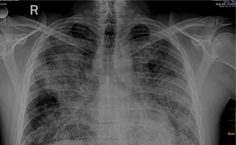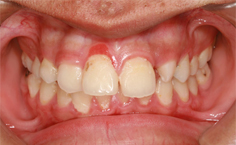Introducing universal ultrasound screening for developmental dysplasia of the hip doubled the treatment rate.
Fuente
Este artículo es originalmente publicado en:
De:
Olsen SF1,Blom HC2,Rosendahl K3,4.
2017 Sep 4. doi: 10.1111/apa.14057. [Epub ahead of print]
Todos los derechos reservados para:
Copyright © 1999 – 2017
John Wiley & Sons, Inc.All Rights Reserved
Abstract
AIM:
There is no evidence on the effect of universal ultrasound screening on developmental dysplasia of the hip. We examined the impact of adding an ultrasound examination to a one examiner clinical screening strategy on treatment, follow-up rates and the number of cases detected late in a low-prevalence population.
CONCLUSION:
Adding universal ultrasound to clinical screening performed by the same, experienced paediatrician doubled the treatment rate, without influencing the already low numbers of late cases. This article is protected by copyright. All rights reserved.
This article is protected by copyright. All rights reserved.
KEYWORDS:
Developmental dysplasia of the hip; Frejka pillow; late cases; neonatal screening; ultrasound screening
Resumen
OBJETIVO:
No hay evidencia sobre el efecto de la ecografía universal en la displasia del desarrollo de la cadera. Se examinó el impacto de la adición de un examen de ultrasonido a una estrategia de cribado clínico de un examinador sobre el tratamiento, las tasas de seguimiento y el número de casos detectados tarde en una población de baja prevalencia.
No hay evidencia sobre el efecto de la ecografía universal en la displasia del desarrollo de la cadera. Se examinó el impacto de la adición de un examen de ultrasonido a una estrategia de cribado clínico de un examinador sobre el tratamiento, las tasas de seguimiento y el número de casos detectados tarde en una población de baja prevalencia.
CONCLUSIÓN:
La adición de ultrasonido universal a la exploración clínica realizada por el mismo pediatra experimentado duplicó la tasa de tratamiento, sin influir en el ya bajo número de casos tardíos. Este artículo está protegido por derechos de autor.
La adición de ultrasonido universal a la exploración clínica realizada por el mismo pediatra experimentado duplicó la tasa de tratamiento, sin influir en el ya bajo número de casos tardíos. Este artículo está protegido por derechos de autor.
Todos los derechos reservados.
Este artículo está protegido por derechos de autor. Todos los derechos reservados.
Este artículo está protegido por derechos de autor. Todos los derechos reservados.
PALABRAS CLAVE:
Displasia del desarrollo de la cadera; Frejka almohada; casos tardíos; rastreo neonatal; ultrasonido
Displasia del desarrollo de la cadera; Frejka almohada; casos tardíos; rastreo neonatal; ultrasonido
PMID: 28871598 DOI:









